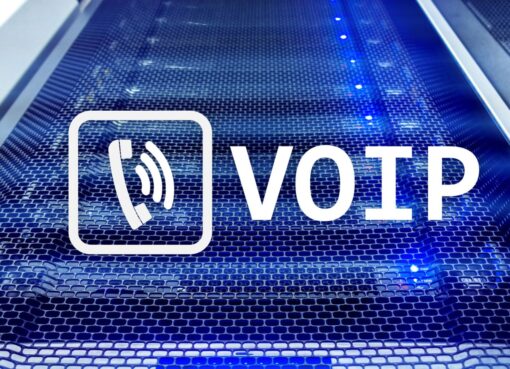Employee Engagement in Hybrid Work Environments: Challenges and Solutions

In today’s rapidly evolving business landscape, a new buzzword has taken center stage: the hybrid work environment. This blend of remote and in-office work is reshaping not just where we work, but how we engage with our work. But how does employee engagement fare in this new setup?
The shift to a hybrid work model presents both opportunities and challenges. It offers flexibility and autonomy, but it also raises questions about fostering engagement, collaboration, and a sense of belonging among employees. This article delves into the intricacies of maintaining employee engagement in such a dynamic scenario.
Challenges of Employee Engagement in Hybrid Work Environments
In the evolving era of hybrid work models, specific challenges are becoming apparent in maintaining high levels of employee engagement. This section delves into those challenges, offering insights into how they might be mitigated.
Communication Barriers
In hybrid work scenarios, one predominant challenge is the communication barrier that can arise. It’s difficult to emulate the ease of communication experienced in a physical office environment in the virtual world. Short interactions or “water cooler talks” are absent, potentially leading to misunderstandings and delays in work flow. Use of top employee engagement platforms like Slack, Teams, or Zoom can help teams stay connected and overcome this challenge.
Lack of Team Cohesion
Team cohesion, a crucial element invoking a sense of unity and collective effort, might suffer in a hybrid system. Different work schedules and locations can prevent the team from interacting as much as they would in a typical office setting. Regular virtual team bonding activities and synchronous tasks can play a role in fostering cohesion among team members across various locations.
Feeling of Isolation
Hybrid work models could lead to feelings of isolation among some employees. The lack of in-person social interactions can adversely impact their morale and motivation levels. Virtual social events, regular touch base meetings, and mentorship programs can be employed as strategies to combat these feelings of isolation.
Difficulty in Managing Performance
Evaluating and managing performance can be more difficult in hybrid work environments. Visibility of work done may not be as apparent compared to traditional on-site work settings.

Tools for tracking task progress and regular feedback sessions can ensure efficient performance management in hybrid settings.
Work-Life Balance Issues
While the hybrid model offers flexibility, it can blur the line between work and personal life, leading to burnout and reduced engagement. Managers play a crucial role in setting boundaries, ensuring that the balance isn’t tipped to one side. Regular health and well-being check-ins, respect for off-work time, and flexibility can help maintain a healthy work-life balance.
Solutions to Enhance Employee Engagement in Hybrid Work Environments
There exist strategies to improver employee engagement, many of which directly address the challenges imposed by hybrid work environments. Each subsequent section presents a distinct solution, offering insights into practical ways businesses can better foster engagement.
Enhance Communication Tools
Optimizing communication avenues plays a pivotal role in keeping employees connected. Advancements in technology present a boon in this regard, with top employee engagement platforms like Slack, Microsoft Teams, and Zoom offering multiple mediums to express, communicate, and collaborate. These tools can be adapted to effectively keep everyone in the loop, regardless of their physical location.
Foster Team Building
Team building acts as the glue which holds an organization together. Virtual team-building activities, ranging from online workshops to virtual games, facilitate a sense of community and foster peer relationships. Moreover, these activities alleviate feelings of isolation, promoting a cohesive team in a hybrid work setting.
Implement Regular Check-Ins
Regular check-ins provide a platform for employees to voice concerns, share updates, and receive feedback. Be it through weekly meetings or one-on-one sessions, these touchpoints serve to strengthen the manager-employee rapport and simultaneously assist in monitoring an employee’s wellbeing and performance.
Set Clear Expectations and Goals
Clarity in expectations and goals is essential for maintaining high performance levels. Transparently communicate anticipated outcomes, deadlines, and key performance indicators (KPIs) to ensure everyone’s on the same page. By doing so, momentary confusion and future disappointments are mitigated.
Promote Work-Life Balance
Encouraging a healthy work-life balance can drastically improve employee morale and productivity. Promote habits such as timely breaks, flexible work hours, and a ‘disconnect’ policy post work hours. Such practices contribute to the psychological well-being of employees, leading to increased engagement.
Invest in Professional Development
Investments in learning and development programs enable employees to upskill, promoting career growth.

This not only signals an organization’s care for its employees, but also results in increased retention and engagement rates. Keep in mind: a lack of opportunities for skill development can lead to employee apathy. Loyalty segmentation in retention programs helps tailor development opportunities, boosting employee engagement and loyalty.
Create an Inclusive Culture
An inclusive culture recognizes and appreciates individual distinctiveness. By promoting diversity, companies reinforce respect and foster a sense of belonging. The result? Engaged and satisfied employees who feel valued for their contributions.
Leverage Technology for Engagement
Finally, technology plays a critical role in driving engagement in a hybrid work environment. Platforms that facilitate recognition (like Bonusly) or survey platforms that capture employee mood and feedback (like TinyPulse) can provide unique avenues to boost employee engagement. Utilizing such platforms ensures that no employees feel overlooked, regardless of where they work.
Conclusion
Navigating the intricacies of hybrid work environments isn’t a walk in the park. Yet, it’s a challenge that companies must embrace to thrive in today’s dynamic work landscape. The hurdles of communication, team cohesion, isolation, performance management, and work-life balance are significant but not insurmountable. It’s through leveraging cutting-edge communication tools, fostering team spirit, setting clear objectives, promoting work-life balance, investing in professional growth, and creating an inclusive culture that companies can surmount these challenges. Technology also plays a pivotal role in enhancing engagement. It’s clear that hybrid work environments are here to stay. The key lies in adapting, evolving, and leveraging the right strategies to keep employees engaged, motivated, and productive. Remember, a well-engaged workforce is the backbone of any successful organization.



